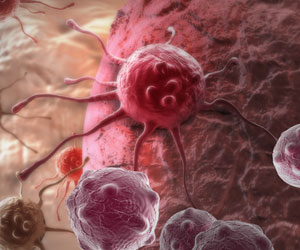Primary tumor cells produce an advance team of molecules that triggers a series of events creating a network of nurturing blood vessels.

Sandra Ryeom, PhD, assistant professor of Cancer Biology, Perelman School of Medicine, University of Pennsylvania, and colleagues, found that the signaling protein calcineurin upregulates another molecule, Ang-2 that promotes the needed angiogenesis. Hyperactivation of calcineurin in genetically altered mice that lack an inhibitior of calcineurin signaling leads to increased lung metastases. Conversely, inhibiting calcineurin or Ang-2 blocked metastases in lung cells of the mice. The findings are published this week in Cell Reports.
The findings may help shed light on the underpinnings of common cancer metastasis patterns, such as the tendency of prostate cancer to spread to the bones, or melanoma to the brain.
"We demonstrated that the calcineurin pathway is activated specifically in lung endothelium prior to the detection of tumor cells that preferentially and spontaneously metastasize to the lung from our experimental model of flank tumors in mice," says Ryeom.
Also, increased VEGF levels specifically in the lung, and not other organ microenvironments, trigger a threshold amount of calcineurin signaling that activates the Ang2 gene in lung endothelial cells. What's more, they showed that overexpression of the Ang-2 receptor prevents activation of the lung endothelium and inhibits lung metastases in their mouse models. "Our studies provide insights into the mechanisms underlying angiogenesis in the pre-metastatic niche and offer new targets for lung metastases," she says. Because calcineurin acts on the pathways that set up sites of metastasis away from the primary tumor sites, it could be a potential target for future cancer therapies; however it is also active in the immune system. In fact, calcineurin is inhibited by cyclosporine, which is used to combat transplant rejection, so using these types of drugs would be tricky for cancer unless they can be targeted specifically towards endothelial cells.Ongoing studies in the Ryeom lab are investigating whether calcineurin is important for metastases in other organs or whether this pathway is specific for lung metastases.
Source-Eurekalert









